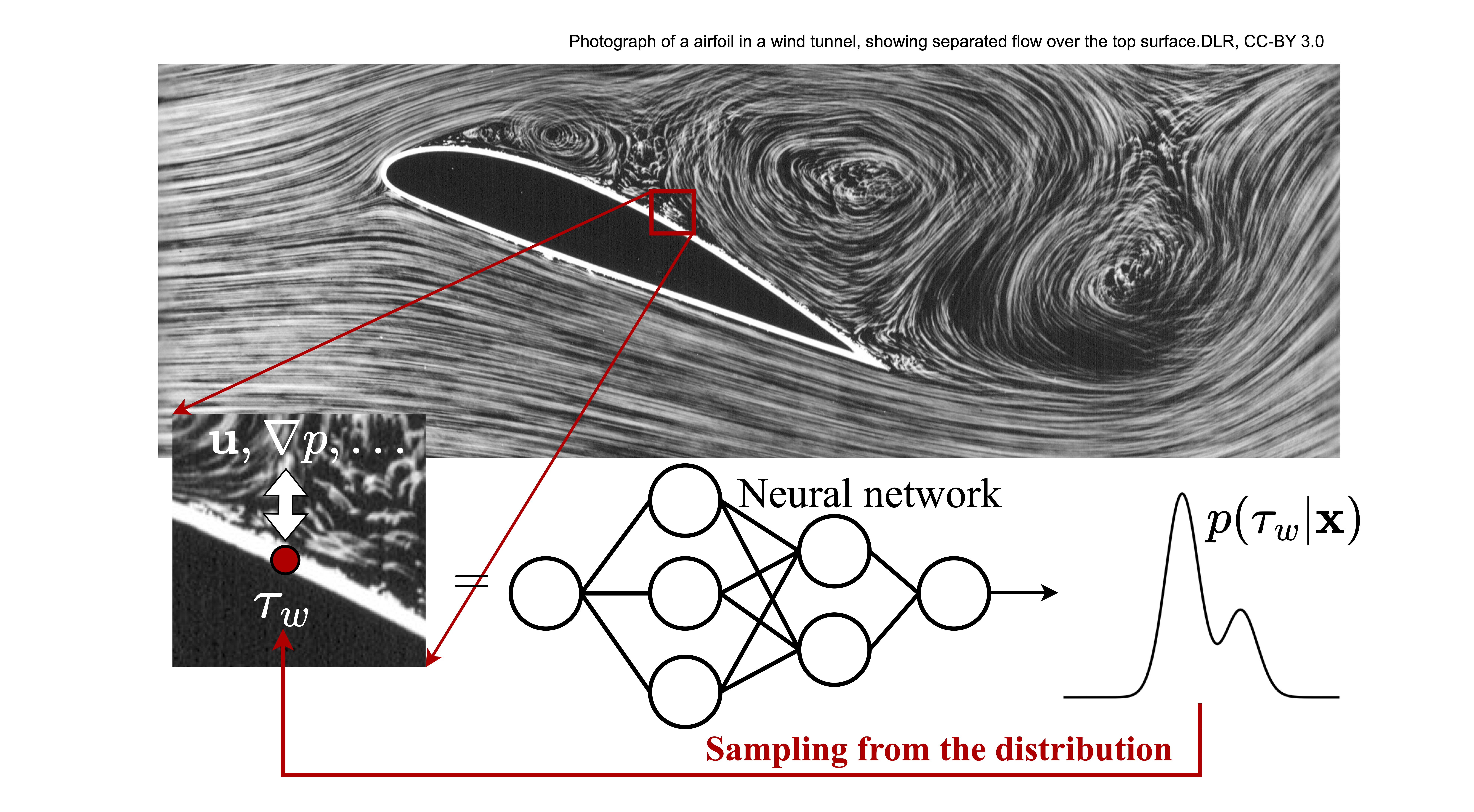Development of Data-Driven Wall Shear Stress Models for Turbulent Separated Flows

Aerodynamics and Wall Models
In the field of aerodynamics, predicting the physical behaviour of airflow over surfaces is a challenging but crucial task. Margaux Boxho, a researcher at Cenaero, is investigating the physical behavior of flow separation, defined in fluid dynamics as the detachment of a boundary layer, i.e., the thin layer of fluid near the surface, from a wall into a wake. Understanding and predicting such complex flow physics is essential, especially in designing innovative jet engines. The research has significant implications, particularly in optimizing jet engines to meet stringent environmental standards. Reducing carbon emissions is a top priority, and achieving this requires novel designs that maintain high efficiency while minimizing weight.
Designing new jet engines involves simulating airflow around the blades of the different engine stages, such as compressors and turbines. The industry frequently uses Reynolds Averaged Navier-Stokes (RANS) simulations, which are low-fidelity simulations, to speed up the design process. However, RANS can fail at off-design conditions due to their inherent assumptions. To overcome this lack of accuracy, one might expect to use Direct Numerical Simulations (DNS), which are free of turbulent models. Unfortunately, they remain prohibitively expensive for industrial configurations. The approach is to reduce the computational costs by resolving only the flow largest scales, leading to simulations known as Large Eddy Simulations (LES). However, these are still too costly due to the need to capture the boundary layer developing along the blade surface. Therefore, the scientific community has introduced wall models to avoid resolving the boundary layer near the wall. Margaux, in collaboration with ULiege, UCLouvain, and Safran Tech, embarked on developing novel wall models for turbulent separated flows using the latest techniques in high-performance computing (HPC) and machine learning.
New Machine Learning Based Models
To develop these novel wall models, the team employed machine learning and deep learning techniques to avoid making prior assumptions about flow physics, as is often the case with analytical approaches. The creation of data-driven wall models required the acquisition of detailed databases to enable the training of deep neural networks. The team implemented a wall shear stress (WSS) model as a neural network. In this implementation, the model must predict the wall shear stress (i.e., the force exerted by air moving over a surface). To enhance the instantaneous prediction of the wall-parallel components of the wall shear stress, the new data-driven WSS model predicts the probability distribution of wall shear stress rather than merely a mean value. A Mixture Density Network (MDN) was utilized, allowing for more reliable predictions in complex flow scenarios. Accurate WSS models will assist engineers in designing better and more efficient machines for tomorrow.
To construct such a model, the team had to identify test cases that encapsulated airflow complexities, including laminar and turbulent boundary layers, transitions, shocks, and separation. Cenaero’s high-order discontinuous Galerkin flow solver, Argo-DG, was used to simulate several test cases of varying complexity and generate high-quality data, including three-dimensional time-dependent data such as velocity, pressure gradients, and wall shear stress.
The Need of Supercomputing Power
To gather this data, the team used powerful supercomputers, first Zenobe and then Lucia. These machines enabled them to perform complex fluid dynamics simulations that would be impossible on conventional computers. For instance, a wall-resolved Large Eddy Simulation (wrLES) of a two-dimensional periodic hill (a test case featuring separation from the hill’s top, followed by a massive recirculation bubble, and reattachment of the free shear layer on the flat bottom surface) required discretization of the considered volume in 445,000 different hexahedra, combined with a third polynomial order, resulting in 28 million degrees of freedom per equation. Solving these fluid dynamics equations on a laptop would be computationally infeasible due to both CPU computational time and memory consumption constraints. Therefore, utilizing supercomputing technology is crucial within the aerospace field, as it significantly advances our understanding of the underlying physics governing the flow dynamics around the geometry under investigation. The machine learning model utilized GPUs for optimal training, while the solver Argo-DG employed multiple CPU nodes for execution.
A Successful Collaboration Between Academia and Industry
This project highlights the power of collaboration between academia and the private sector. Researchers from Cenaero, ULiege, UCLouvain, and Safran Tech combined their expertise in aerodynamics, computational fluid dynamics, machine learning, and high-performance computing. This teamwork was essential in overcoming the challenges and achieving the project’s ambitious goals.
HPC is Driving Innovation Forward
The success of this project would not have been possible without the support of Walloon HPC infrastructures. The Cenaero Tier-1 supercomputers Zenobe and Lucia provided the computational power needed to perform large-scale simulations and train complex machine learning models on GPUs. This collaboration underscores the critical role of HPC in driving innovation and solving complex engineering challenges.
The scientific publications related to this project can be found here :
Boxho, M., Rasquin, M., Toulorge, T. et al. Analysis of Space-Time Correlations to Support the Development of Wall-Modeled LES. Flow Turbulence Combust 109, 1081–1109 (2022).https://doi.org/10.1007/s10494-022-00365-3
Boxho, M., Rasquin, M., Toulorge, T. et al. Wall model based on a Mixture Density
Network to predict the wall shear stress distribution for turbulent separated flows. Flow Turbulence Combust (2025) (to be published)
Dr. Margaux Boxho

Margaux BOXHO graduated in applied mathematics engineering at the Université Catholique de Louvain (Belgium) in 2019 and obtained her PhD in industry under the supervision of Prof. Koen Hillewaert (ULiège) and Prof. Grégoire Winckelmans. Her thesis, funded by Safran Tech, consisted of the implementation of a wall model compatible with turbulent separation in a discontinuous Galerkin code.